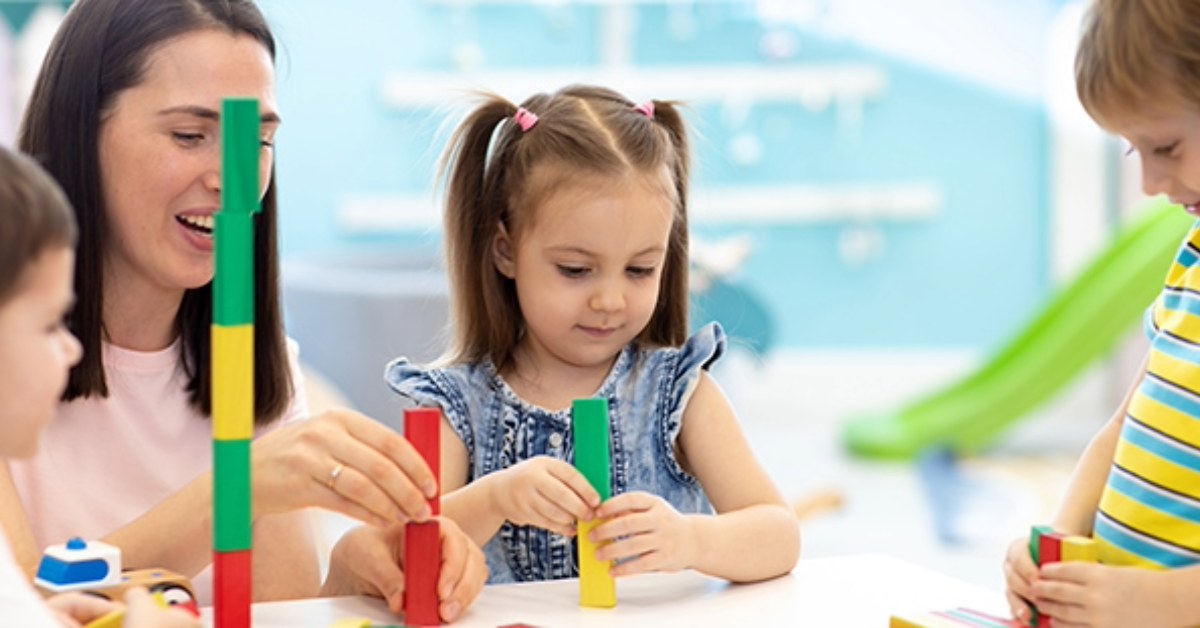31 Mar 2025
What is Curriculum in Early Childhood Education?
Making a difference in children's lives starts with preparation. A good curriculum guides you every step of the way.
As an Early Childhood Educator, you’ll teach kids about the world, themselves and how to interact with others under a framework designed to really help them. If you’re thinking about studying or moving up in this field, you’ll need to learn how to develop and follow curriculums that support young children's holistic development.
Why is curriculum important in Early Childhood Education?
Curriculums give Early Childhood Educators a clear and structured way to support children’s holistic development in early learning settings. It’s also a roadmap by which they can track progress and give more individual support.
When looking after multiple children, a well-designed curriculum also gives the group structure. It creates a safe, predictable environment where kids feel comfortable and ready to learn. This sense of routine helps kids understand what to expect, making them feel more willing to explore and engage with new experiences.
It’s also important for parents — the curriculum is a window into their child's education. It summarises exactly what they will learn and the milestones they should hit in their early education.
Ultimately, a curriculum should cover multiple areas of learning and build a strong foundation for future education.
What does the Early Childhood curriculum framework include?
In Australia, the National Quality Framework sets the standards for Early Childhood Education. Under this, the Early Years Learning Framework (EYLF) is the guide that helps educators come up with curriculums.
The EYLF looks at learning as a complete experience. It’s built on three important ideas:
Belonging: Helping children feel part of a group.
Being: Letting children enjoy their childhood.
Becoming: Supporting children as they grow and change.
In Victoria, educators also use the Victorian Early Years Learning and Development Framework (VEYLDF), which aligns with the national framework and addresses specific state priorities.
Early Childhood Educators use these frameworks as a guide to come up with curriculums.

Building blocks of a strong Early Childhood curriculum
Creating a curriculum takes planning. According to Early Childhood learning frameworks in Australia, a good curriculum will:
Support whole-child development: Design activities that help children learn, move, build friendships and communicate.
Use play-based learning: Create experiences that help children develop thinking, social and physical skills.
Celebrate cultural diversity: Include resources and experiences from different backgrounds.
Personalise learning: Adjust lessons to match each child's unique abilities and interests.
Create a safe learning space: Encourage children to explore and learn without fear.
Develop children’s social and emotional skills: Teach kindness, sharing and understanding feelings.
Provide appropriate challenges: Create activities that are interesting but not too far beyond their current abilities.
Work in hands-on and outdoor learning: Go beyond classroom walls to make learning more meaningful.
Balance technology use: Use digital tools carefully alongside real-world interactions.
Work with families: Collaborate to support children's learning.
Want to know more? Read the full Early Years Learning Framework or Victorian Early Years Learning and Development Framework.
How to plan an Early Childhood curriculum
Understanding the curriculum is one thing. Learning how to plan one is another. Our CHC50121 Diploma of Early Childhood Education and Care teaches you exactly how to do this.
In the diploma, you'll learn to:
Watch and understand how children learn
Design learning experiences for individuals and groups
Create spaces that encourage exploration
Use teaching strategies that help children learn
Keep track of children's progress
See the course units for more information on the curriculum training included in this qualification.
What is an example of curriculum planning?
All curriculums will look a little different depending on where you’re teaching. They’ll also look a little different one-on-one than they might in a group setting. Either way, it should clearly define key learning areas while giving educators space to use their natural teaching approach.
Here’s an example of how curriculum planning might go in an individual or small group setting:
Watch: Observe children's interests, skills and development needs through documentation and notes.
Plan activities: Based on your observations, design activities that extend interests, develop skills or address learning needs. For example, bringing out train tracks and figurines to encourage play.
Link to EYLF: Connect each planned experience to one or more learning outcomes from the EYLF.
Include parent input: Incorporate suggestions and information from families about their child's interests and experiences at home.
Reflect: Regularly assess if your curriculum supports all areas of development and make adjustments as needed.
Interested in Early Childhood curriculum planning?
Trying to figure out if a career in childcare is right for you? Whether you’re a Long Day Care Educator, Kindergarten Assistant, Childcare Assistant or Early Childhood Educator, getting the right qualifications will allow you to be involved with this process.
Start your path to creating powerful early learning curriculums. Get in touch with us to discover a learning plan that matches your career goals and personal situation.
Proud member of

Funding
© Foundation Education | RTO Number 22557
